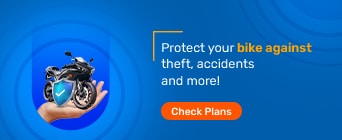There are three types of driving licence tests for learners, one for gearless two-wheelers, one for light motor vehicles and one for heavy motor vehicles. As per the test procedure, you will have to fill in the application form and then select the date and time for the test and the nearest RTO office. It will be a computerised test with basic MCQs, Multiple Choice Questions, about traffic signs and rules and regulations of the road. The permanent licence test, on the other hand, will require you to pay a test fee and you will need to arrive at the RTO office with your vehicle. The applicant will get a permanent licence based on their performance.
Having a car or bike is not just an aspirational asset, but is also essential for many. Having your own vehicle gives you freedom and independence, can help ensure your safety when travelling, and helps you go where you want, when you want. But before you can get one, you’ll need to learn how to drive a car, and obtain a licence from the government certifying that you are fit for driving. This helps ensure both your own safety and the safety of others on the road.
The driving licence test consists of two parts- The learner’s licence and the permanent licence. This is so that you are given permission to operate a vehicle to learn, but with certain terms, conditions and supervision in place to ensure everyone’s safety. Furthermore, there is a different driving test for bikes and cars, and the driving licence test procedure is different for the two types of vehicles as well. Let’s take a look.
Given that there are a wide variety of types of vehicles being operated on the road, the driving licence test policy that is put in place has to reflect this diversity as well. As a result, there are a number of different learner’s licence test categories based on the type of vehicle you are driving. These types include:
1. Gearless Two-Wheelers
A driving test for two-wheelers, including gearless two-wheelers will include scooters and mopeds etc.
2. Light Motor Vehicle
Light Motor Vehicles on the other hand refer to cars and motorbikes, for which you will require a four-wheeler driving licence.
3. Heavy Motor Vehicle
These include larger, and often commercial vehicles such as trucks, trailers and lorries that exceed the weight and engine capacity limit of light motor vehicles.
The learner's licence test assesses not only your ability to operate your vehicle, but also how well you can follow the rules on the road. The procedure for the learner driver test is as follows :
1. Before you give the learner driver test, you will first have to fill out the application form, which can be done either online or offline at your nearest RTO.
2. You will then select a date and time for your learner’s licence test. Alternatively, you may be able to give the learners licence test immediately if you apply at the RTO.
3. The test is typically a computerised test where you will be required to answer some multiple-choice questions regarding content about traffic signs and signals, driving basics, as well as rules and regulations for the road.
Once you have acquired your learner’s licence, you will first have to wait a minimum of 180 days before you can apply for your permanent licence test. The goal here is for you to use the time to practise driving, ideally with a certified trainer, so that you are well-versed with the basics before you’re given a permanent licence. Here is the test procedure for the permanent licence test.
1. As before, you will have to fill out the application for the driving licence test for your permanent licence.
2. You will have to submit your documents and test slot booking slip to the RTO, alongside the RTO driving licence test fee.
3. AT the time of the test, you will have to arrive at the testing station along with your vehicle, where a certified moto instructor will have you drive through a short obstacle course to assess your ability to handle your vehicle. If you pass, you will be issued your permanent driver's licence.
Given that the types of vehicles are different, the 2 wheeler licence test will vary from the test for a four-wheeler licence. Here is the procedure for your 2 wheeler licence test.
1. First, make your way into the test area.
2. You will have to make use of a card reader to swipe your ID to be verified.
3. Once your ID has been verified (indicated by the green light), you will be presented with the start line.
4. Once you move past the start line, the test will begin. This typically involves you needing to drive in a figure-eight shape.
5. The evaluation parameters for the 2 wheeler licence test include the time taken to complete the test, and the violations committed. The instructor will also look at how you use hand signals.
The process for a four-wheeler is similar. The test will typically involve you needing to complete an “H” figure with your car without touching the side cones. If you succeed you will typically be requested to complete a short-obstacle course or do a road test, where you will be assessed on your ability to drive on road with other vehicles and in accordance with road rules and etiquette.
Getting a driver’s licence is mandatory to ensure your safety, as well as that of those on the road around you. Now that you know how the four and two-wheeler driving licence test procedure works, you can begin preparing for your test.
The way a driving licence protects those on the road around you, car insurance will help protect you in an event that an accident does occur. If you wish to purchase vehicle insurance, the Bajaj Markets website has a wide variety of offerings. Visit Bajaj Markets to access its expansive insurance catalogue.
FAQs on Driving Licence Test
Can I get only a two-wheeler or four-wheeler licence?
Yes. During the time of the application, you choose whether you want a two-wheeler licence, four-wheeler licence, or both.
What if I am late for the test?
If you are late, you will not be allowed to give the test, and will have to return the next day.
Can I use a learner’s licence beyond 180 days?
No. After the learning period ends, you have to apply for the permanent licence test, or have your driving licence lapse, and begin the process over.
What if I fail the test?
If you fail the test, you will be able to reappear after a certain waiting period.
Does the driver's licence test require my physical presence, or can I do it online?
It is mandatory for you to be available physically for the test.
Why is a driving test conducted?
A driving test is essential to gauge your driving skills and awareness of traffic rules.
What are some tips for clearing your driving test?
You can follow the given tips to ensure you have a good performance in your driving test:
Practise your driving skill when you obtain the learning licence
Arrive early for the driving test
Do not turn off your vehicle before it has come to a complete halt
Make sure that you shift gears smoothly
Make use of side and rear mirrors when driving
Show indicators and hand signals when turning
Be confident while giving your test.
What happens if you fail the driving test 3 times?
If you fail the driving test 3 times, you have to start over in the licensing process from application submission.
If I fail the driving licence examination, do I have to pay the driving licence test fees again when reappearing for it?
Yes. You are liable to pay a fee of Rs. 500 when reappearing for your DL test. Know that you can reapply for the DL test after seven days from the date of failing the previous test.
.jpg)




